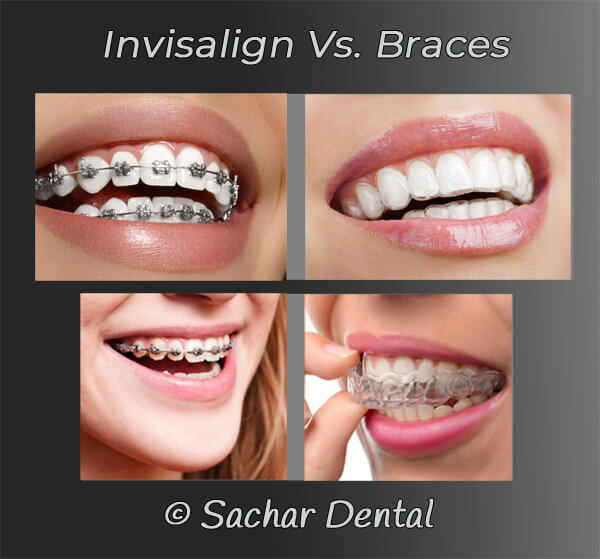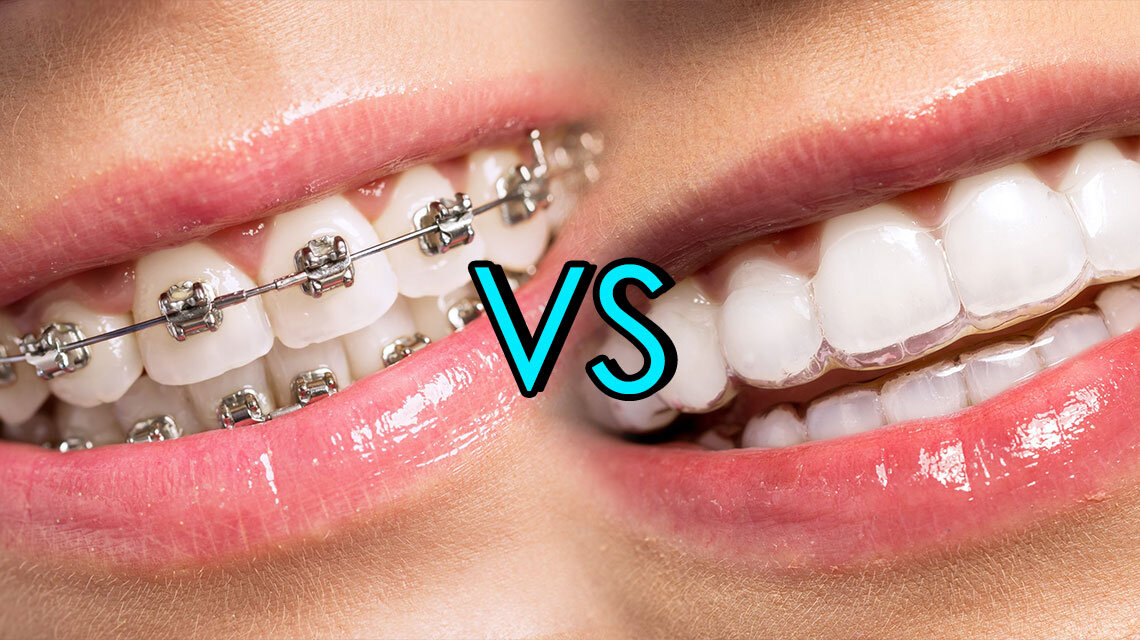Keeping Oral Health While Making Use Of Invisalign: Tips for a Smooth Experience
Keeping Oral Health While Making Use Of Invisalign: Tips for a Smooth Experience
Blog Article
Invisalign vs. Typical Braces: Which Choice Is Right for You?
When considering orthodontic treatment, the selection between Invisalign and typical braces provides several important factors that warrant cautious assessment. Invisalign provides a discreet choice with removable aligners, while conventional dental braces provide a much more visible yet efficient remedy for serious misalignment. Each option encompasses distinctive benefits and drawbacks connected to aesthetic appeals, comfort, therapy period, and cost. Understanding these subtleties is critical for making a notified decision that straightens with your individual choices and lifestyle. The concern stays: which alternative will finest meet your orthodontic demands and expectations?
Summary of Treatment Alternatives

On the other hand, standard dental braces consist of steel brackets and cables that are adhered to the teeth. This approach applies continual pressure over time to achieve alignment. While efficient for complex orthodontic issues, standard braces need routine brows through for changes and can pose obstacles in maintaining dental health because of the problem of cleaning about wires and brackets.
Both choices have their benefits, and the selection frequently hinges on particular oral conditions, way of life choices, and individual conformity. Eventually, getting in touch with an orthodontic expert is essential for identifying one of the most suitable treatment plan customized to individual needs. Comprehending the nuances of each choice can considerably affect the general success of orthodontic therapy.
Aesthetic Factors To Consider
A substantial element affecting the option in between Invisalign and standard dental braces is the visual appeal each therapy supplies. Invisalign aligners are crafted from clear plastic, making them virtually unnoticeable when worn. This discreet look is especially interesting grownups and teens that might feel uneasy regarding their orthodontic treatment. The capability to preserve a natural smile throughout the alignment process can substantially boost the client's self-confidence in specialist and social settings.
On the other hand, traditional dental braces consist of metal brackets and wires, which can be a lot more recognizable. While improvements in orthodontic technology have caused the development of smaller sized braces and colored elastics, traditional braces still maintain a more obvious profile. For some individuals, the exposure of dental braces may prevent them from looking for essential therapy.
Eventually, the selection between Invisalign and standard braces may depend upon individual preferences concerning visual appeals. People who prioritize discernment commonly favor Invisalign, while those that are less concerned regarding visibility might choose for conventional braces. Comprehending the visual effects of each option is essential for making a notified decision that aligns with one's way of living and preferences.
Comfort and Convenience

In terms of benefit, Invisalign aligners are removable, making it possible for clients to appreciate their favorite foods without limitation and preserve ideal dental hygiene. Cleaning and flossing are streamlined, as the aligners can be obtained throughout these routines, whereas typical dental braces need careful maneuvering around braces and cables.
Additionally, Invisalign's dynamic system enables fewer orthodontic brows through. Individuals usually receive multiple sets of aligners simultaneously, which can simplify the treatment procedure and lower time spent in the orthodontist's chair. In comparison, traditional dental braces demand routine adjustments, making them much less convenient for those with hectic routines. Invisalign. Overall, the comfort and comfort of Invisalign make it an enticing option for numerous individuals seeking orthodontic therapy.
Treatment Period and Effectiveness
While both Invisalign and traditional dental braces are efficient in correcting oral misalignments, the period of treatment can differ dramatically between the two options. Generally, Invisalign treatment can take anywhere from 12 to 18 months, depending on the intricacy of the instance. The clear aligners work by gradually shifting teeth right into their wanted settings, and regular follow-ups with an orthodontist assistance guarantee progression remains on track.
In contrast, conventional braces commonly need a longer dedication, normally ranging from 18 months to 3 years. This is because of their set nature and making use of wires and braces, which can be much more reliable for intricate situations and serious imbalances (Invisalign). The therapy efficiency of typical braces is well-documented, as they permit exact changes and greater control over tooth movement
Inevitably, the option between Invisalign and standard braces might rest on both the anticipated treatment period and the specific oral problems available. Consulting with an orthodontist is critical, as they can give tailored recommendations based on individual demands, making sure the picked technique straightens with desired timeframes and outcomes.
Cost Contrast and Insurance Policy Alternatives
Expense plays a significant duty in the decision-making process for individuals taking into consideration orthodontic therapy, whether selecting Invisalign or standard braces. Typically, the expense of Invisalign varieties from $3,000 to $8,000, while conventional braces commonly set you back between $2,000 and $6,000. Aspects influencing these costs consist of the complexity of the instance, the duration of therapy, and geographical place.
Insurance coverage can considerably influence out-of-pocket costs. Several dental insurance plans supply partial protection for orthodontic therapies, but the specifics can differ widely. It is vital Website for clients to assess their insurance coverage to determine the level of coverage for either choice. Generally, traditional dental braces may be a lot more internet regularly covered by insurance strategies contrasted to Invisalign, which some insurance providers categorize as an aesthetic treatment.
In addition, several orthodontic methods use adaptable settlement strategies, making both therapy options much more obtainable. People need to make inquiries about potential funding choices and price cuts for ahead of time settlements. Reviewing the complete expense, including insurance benefits and layaway plan, is crucial for making an educated choice that lines up with both aesthetic choices and spending plan factors to consider.

Conclusion
In recap, the choice in between Invisalign and standard dental braces depends upon numerous elements, including aesthetic choices, convenience, treatment period, and cost. Invisalign uses a very discreet, removable alternative that helps with oral health and dietary versatility, while typical braces might be more appropriate for complex oral issues and typically come with a lower price factor. Ultimately, appointment with an orthodontist is important to examine individual situations and figure out one of the most appropriate therapy option for accomplishing ideal oral placement.
When considering orthodontic treatment, the option in between Invisalign and conventional dental braces offers numerous important elements that merit cautious examination.Contrasting Invisalign and standard dental braces exposes distinctive treatment alternatives for orthodontic adjustment.While both Invisalign and typical dental braces are reliable in dealing with dental imbalances, the period of treatment can differ dramatically in between the 2 alternatives.Price plays a substantial function in the decision-making process for people considering orthodontic therapy, whether deciding for Invisalign or typical dental braces.In summary, the choice between Invisalign and typical dental braces pivots on several elements, including visual choices, comfort, therapy period, and price.
Report this page